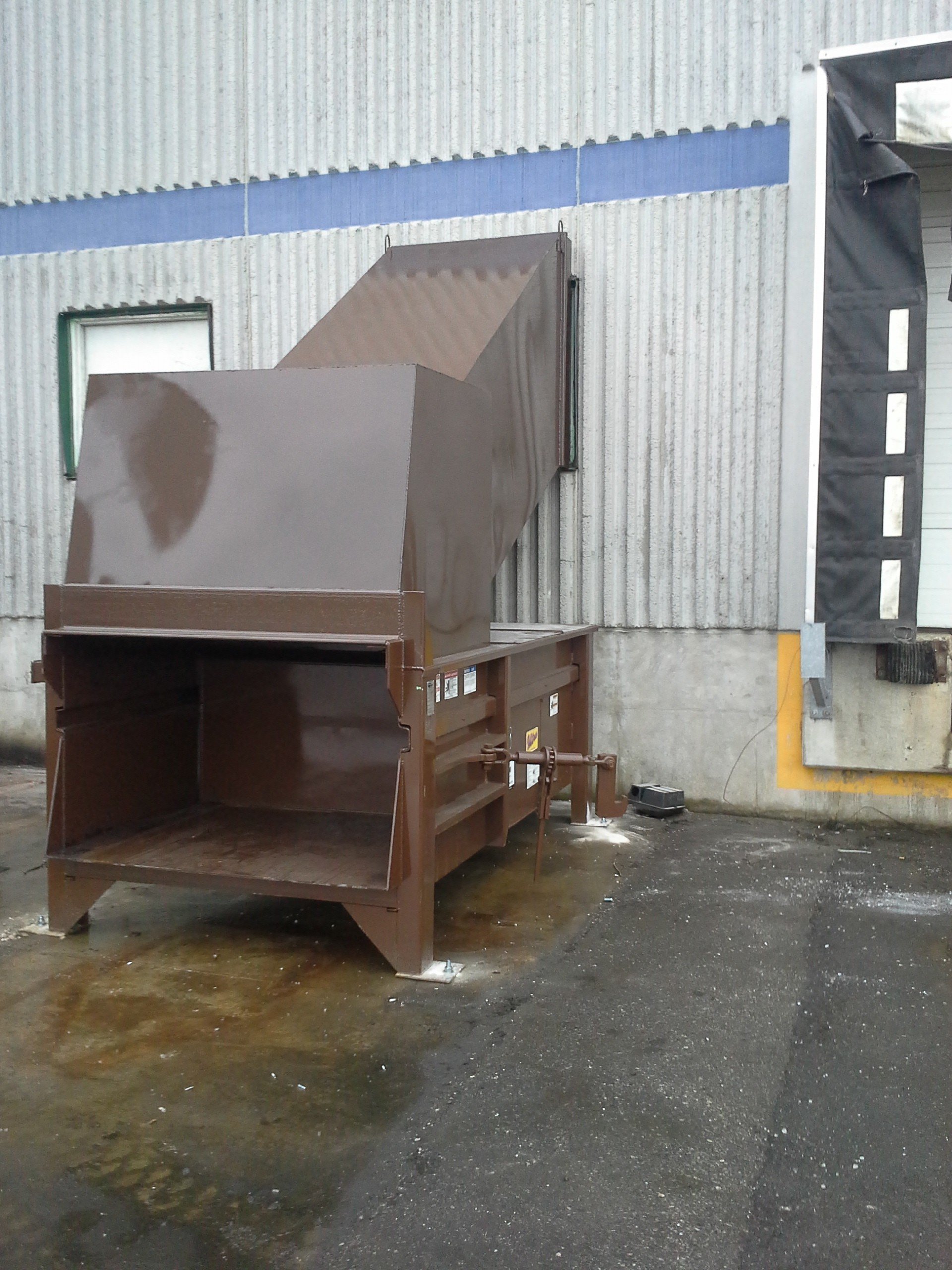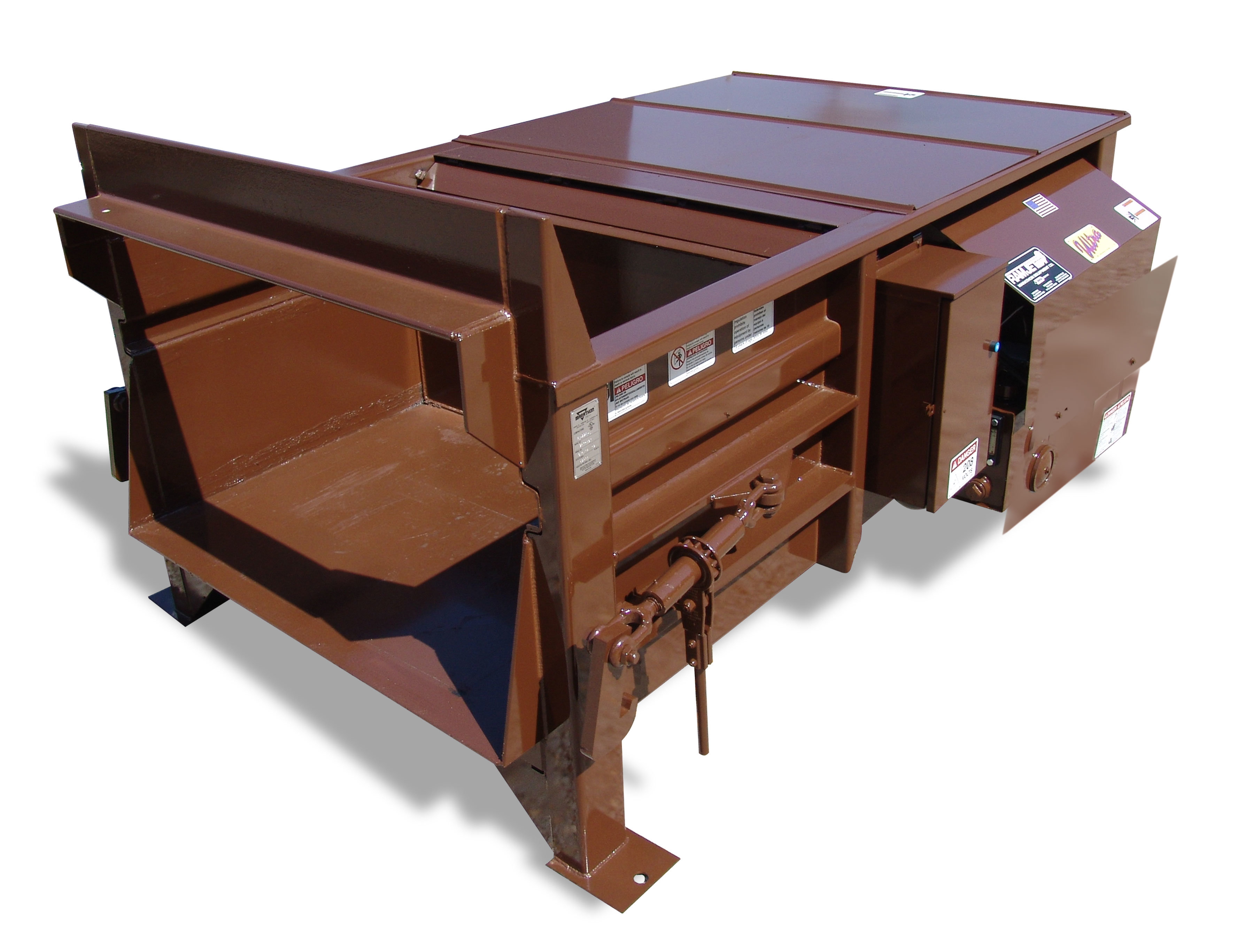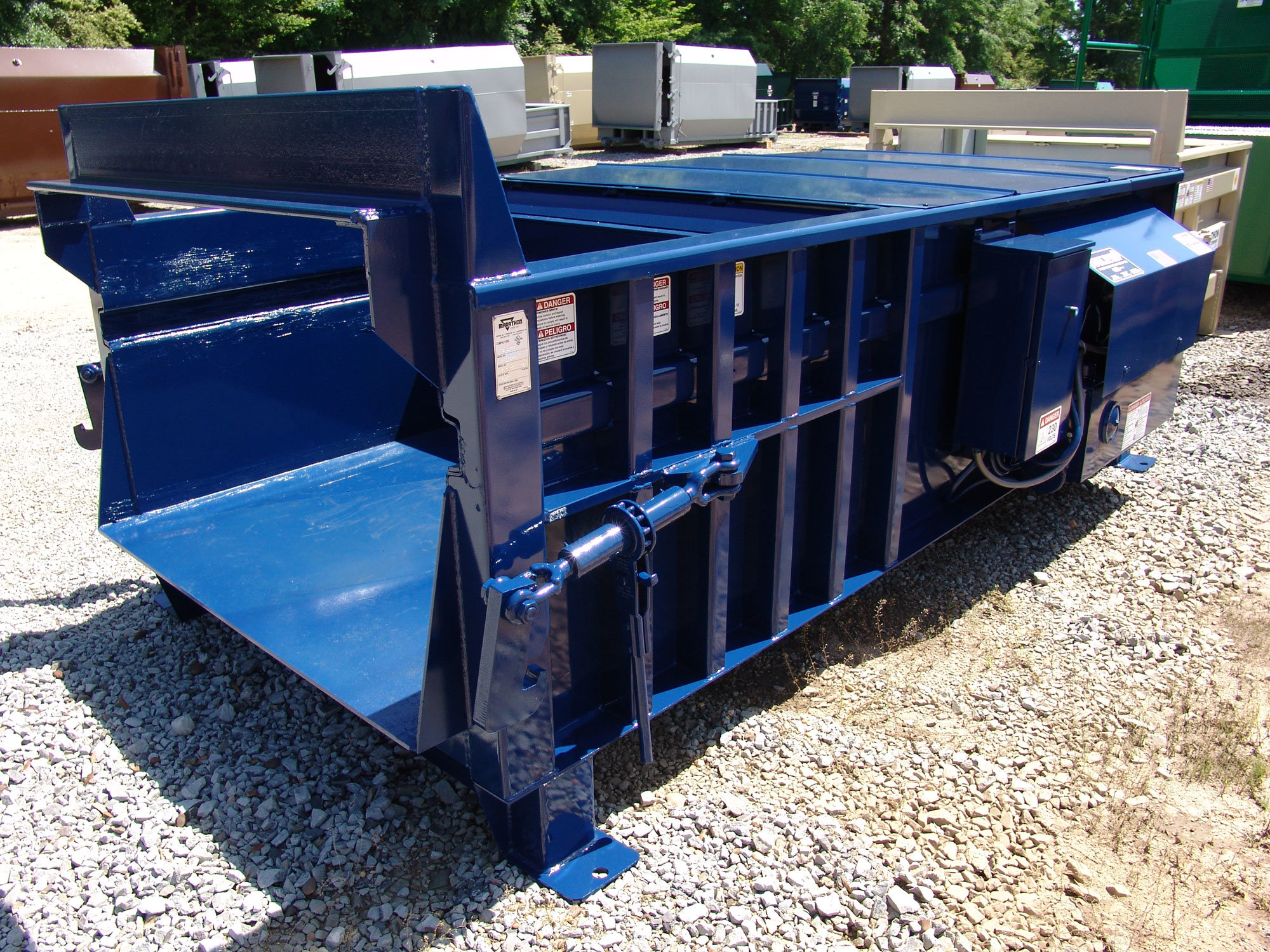Exploring the main features of Commercial trash compactor equipment
Wiki Article
Understanding the Numerous Uses Waste Equipment in the Recycling Market
The reusing market counts heavily on specialized waste devices to optimize handling and healing. Each device, from shredders to balers, serves an unique function that improves total effectiveness. Comprehending these functions is necessary for boosting sustainability initiatives. Commercial garbage compaction equipment. As innovation advances, new developments emerge, promising to transform traditional techniques. This development raises essential questions about the future of waste monitoring and its influence on ecological preservation. What adjustments lie in advance for this vital market?The Function of Shredders in Product Handling
Shredders play an important role in the reusing industry by effectively processing different kinds of waste products. These makers are designed to lower big items, such as plastics, steels, and organic waste, into smaller, manageable pieces. This dimension decrease is necessary for subsequent recycling procedures, as it enables for easier handling and sorting. In addition to facilitating recycling, shredders enhance security by minimizing the threat of injury connected with handling large waste items.Furthermore, shredders add to ecological sustainability by ensuring that products are processed in a manner that maximizes source healing. They can manage a diverse variety of products, making them flexible devices in waste administration centers. The effective procedure of shredders not only enhances the reusing process however likewise raises the general efficiency of waste diversion efforts, promoting a circular economic situation. Their significance in product handling can not be overemphasized, as they act as a fundamental action towards sustainable waste administration techniques.

How Balers Enhance Efficiency in Waste Monitoring
Balers considerably improve efficiency in waste administration by condensing various materials right into bundles, which simplifies storage space and transport. By compressing recyclables such as cardboard, plastics, and metals, balers substantially decrease the quantity of waste. This compression not only optimizes room in reusing centers yet likewise reduces the number of journeys needed to carry materials, causing lower fuel prices and lowered ecological effect.Balers add to boosted safety and security in waste monitoring operations. Small bundles are less complicated to handle and stack, minimizing the risk of crashes linked with loose products. The uniform dimension of bales permits more reliable loading and dumping processes, streamlining operations within recycling centers. In addition, balers can boost the general high quality of recyclables, as properly compacted materials are less likely to be infected. Overall, balers play a crucial duty in enhancing waste monitoring practices, advertising sustainability in the reusing industry.
Conveyor Solutions: Improving the Recycling Refine
Including advanced machinery like balers considerably boosts waste administration procedures, but the performance of the recycling process is additionally improved through using conveyor systems. These systems play a necessary function in the smooth transportation of products within recycling centers. By promoting the motion of numerous waste types, conveyor systems lessen manual handling and lower the threat of contamination throughout the recycling procedure.Moreover, conveyor systems can be customized to fit the distinct layouts and functional demands of reusing centers. Their capacity to run continuously enables a steady circulation of products, enhancing performance and making certain that processing and sorting tools gets a consistent supply.
Outfitted with functions like adjustable speeds and automated controls, conveyor systems can maximize the circulation of products, significantly improving overall performance (Commercial garbage compaction equipment). These systems are essential in modern-day recycling procedures, adding and streamlining procedures to effective waste management.
Arranging Makers: The Secret to Material Recuperation
Arranging equipments are important components in the recycling industry, substantially improving the performance of product healing. These devices play a crucial role in the splitting up of different recyclable materials, allowing for a structured procedure that takes full advantage of resource extraction. By utilizing sophisticated innovations, such as optical sensors and air classifiers, sorting devices can identify and categorize materials based on their weight, structure, and dimension. This capability ensures that metals, plastics, and paper products are properly separated, lessening contamination and improving the top quality of recycled output.The procedure of sorting equipments substantially lowers the dependence on manual work, which can be both taxing and vulnerable to mistakes - Commercial garbage compaction equipment. Furthermore, the automation given by these devices speeds up the general recycling process, leading to higher throughput and increased functional efficiency. As a result, sorting makers are vital in accomplishing lasting waste monitoring objectives, enabling the recycling market to successfully Commercial trash compaction equipment recuperate valuable products while reducing garbage dump dependence

Advancements in Waste Equipment for a Lasting Future
Recent innovations in waste equipment are driving the recycling sector toward a more lasting future. Technologies such as automated arranging systems, which make use of artificial knowledge and maker learning, enhance effectiveness by accurately determining and dividing recyclables. This causes higher healing rates and decreased contamination. Additionally, growths in condensing technology enable much more efficient transport of materials, minimizing carbon impacts during transit.Advancements in shredding tools boost the processing of intricate materials, making it possible for the recycling of items that were as soon as regarded non-recyclable. The assimilation of renewable power resources, like solar energy, in waste processing facilities further adds to sustainability objectives. In enhancement, innovations in waste-to-energy modern technologies and eco-friendly products are reshaping the landscape of waste management. Collectively, these improvements indicate a transformative change within the recycling industry, promoting not only environmental defense yet additionally economic viability for future generations.
Often Asked Questions
What Types of Materials Can Waste Devices Manage?
The kinds of products waste tools can manage consist of plastics, steels, paper, glass, and organic waste. Each devices type is designed for certain products, enhancing performance and effectiveness in arranging and processing different waste streams.How Typically Should Waste Tools Be Preserved?

Exist Safety Worry About Utilizing Waste Tools?
Safety interest in utilizing waste equipment include potential injuries from mechanical breakdowns, direct exposure to hazardous materials, and poor training. Proper upkeep, regular evaluations, and staff member education and learning are necessary to reduce these dangers successfully in any type of setup.What Is the Typical Life Expectancy of Recycling Equipment?
The ordinary life expectancy of recycling tools commonly ranges from 10 to two decades, depending upon factors such as use intensity, maintenance techniques, and technological improvements, which can substantially influence longevity and efficiency over time.How Is Waste Equipment Powered in Recycling Facilities?
Waste tools in reusing facilities is commonly powered by electrical energy, though some equipments might make use of alternative energy sources like all-natural gas or diesel. This power allows reliable handling and makeover of products for recycling functions.Shredders play a critical function in the recycling industry by successfully refining various kinds of waste products. They can take care of a diverse variety of products, making them versatile tools in waste monitoring centers. Balers considerably boost performance in waste monitoring by compacting numerous products into bundles, which streamlines storage and transportation. The kinds of products waste tools can handle include plastics, steels, paper, glass, and natural waste. Safety and security concerns with utilizing waste equipment consist of possible injuries from mechanical malfunctions, direct exposure to harmful materials, and poor training.
Report this wiki page